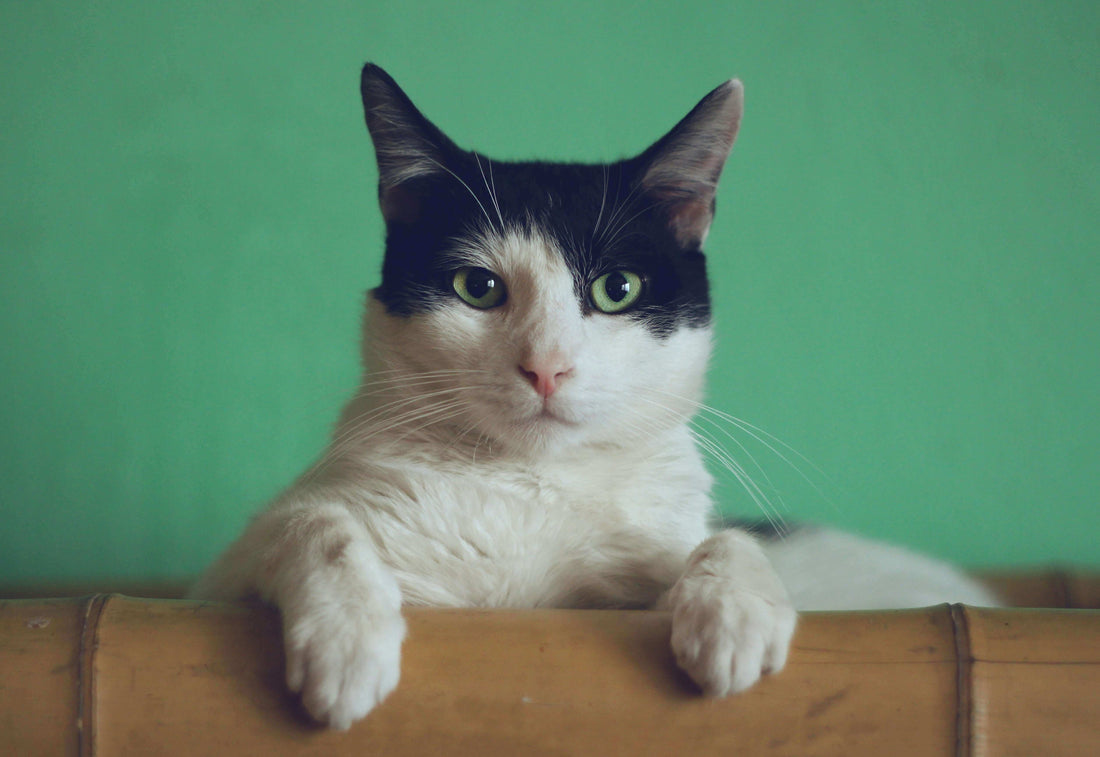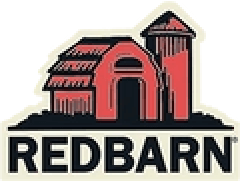
6 Essential Nutrients Cats Need to Thrive
You’ve arrived at your local pet supply store. Standing in the cat food aisle, you find yourself surrounded in a sea of colorful cans of cat food, all claiming to be the optimal choice for your feline friend.
The cans shout, “Premium! Super Premium! Fancy! High-Quality!”
These days, it’s common for pet food to contain just as many buzzwords as human food. In fact, you may even see some of the same buzzwords or callouts you find on your healthy human snacks.
Of course, our fluffy feline friends can’t read labels or make a conscious effort to choose healthy foods, so your dedication to their well-being is vital. The choice you make for your cat(s) will have a lasting impact on their overall health, well-being, and quality of life.
No pressure, right? But as leaders in the pet nutrition industry, Redbarn is here to help.
With a little research into the basics of cat nutrition, we can uncover what ingredients to look for and what buzzwords are actually meaningful. Even if you’re an experienced cat parent, refreshers into cat nutrition will help ensure your current cat food company is keeping up-to-date.
So, without further ado, let’s uncover the proper ways to nourish our cats’ curious minds, strong bodies, and fury coats!
6 Essential Nutrients Cats Need to Thrive
Just like their human parents, cats require a biologically-appropriate diet that satisfies all of their nutritional needs. There are many healthy cat food options and brands that truly care about your cat’s well-being; you just have to know what to look for!
Did You Know?
Beef, fish, and poultry provide essential nutrients to cats. Because they are strict carnivores, cats cannot survive without eating meat in some form.
1. Animal Protein
Cats are fundamentally carnivores! That’s why animal protein is number one on our list.
Cats can obtain all their essential amino acids from animal protein. Proteins are the building blocks of organs and tissues, including cartilage, tendons, hair, skin, blood, muscles, and the heart. They are part of enzymes, hormones, and antibodies.
Complete & balanced cat food should include animal protein from such meats as turkey, chicken or beef, as well as fish and eggs. Feeding your cat a well-balanced diet assists in the healthy functioning and regeneration of body tissues and helps keep their claws and fur strong and healthy.
Fresh, high-quality animal protein is the first ingredient in all of Redbarn’s filets. These recipes, following guidelines set by the Association of American Feed Control Officials (AAFCO) contain the correct intake of proteins essential for adequately maintaining the internal organs and muscles of cats.
2. Fats
Animal fats are the main source of energy for cats. “Good fats” is a term used to describe fats naturally present in meat and fish as well as the essential fatty acids such as Omega 3 and Omega 6 fatty acids. These “good fats” are fundamental to feline health.
“Fats help a cat maintain body temperature, provide energy and absorb vitamins such as A, D, E and K,” Steve Doerr, Technical Director and Research and Development Scientist at Redbarn Pet Products said. “Because cats can only receive ‘“good fats’” through what they consume, it is important the cat food you provide is enriched with Omega 3 and Omega 6.”
3. Carbohydrates
Although carbohydrates are not typically seen as essential nutrients in the diets of cats, carbs do play critical roles in your cat’s body. Carbohydrates provide a highly digestible, readily available energy source and should be present in all cat foods.
Cats can get their necessary carbs from grains like wheat and rice. Because these grains are typically added ingredients in many wet cat foods, these carbohydrate sources are pre-treated to facilitate digestibility and absorption into your cat’s body. Carbohydrates from uncooked soybeans and other legumes should be avoided as they contain many antinutritional factors.
4. Water
This one may seem like a no-brainer, but did you know cats tend to consume less water than they need? “Seventy percent of a cat is water. In the past, cats lived in natural habitats with restricted access to clean drinking water,” Lindsay Tracy, Director of New Product Development at Redbarn Pet Products said. “Through evolution, cats have adapted to this situation by obtaining the majority of the water they need through the food they eat.”
Water is essential for cats and helps the body:
-distribute nutrients correctly
-maintain temperature
-eliminate toxins, and
-metabolize nutrients
Besides increased palatability and generally higher animal protein contents, the high moisture contents found in wet or canned cat food makes it a smart meal choice for cat parents.
Wet food for cats is typically 78 to 82 percent water and is an excellent source of hydration. Redbarn filets are no exception, and are an excellent source of hydration.
Wet food can be used as a full feed or a kibble topper, helping your cat stay adequately hydrated throughout the day. Don’t compromise the health of your cat due to a lack of water! In addition to incorporating wet food into their diet, be sure to always leave out a water bowl for your cat.
5. Vitamins
Vitamins are essential to all mammals. The most important thing to keep in mind with vitamins is to feed them in the right proportions. Most vitamins are synthesized from the raw materials found in your cat’s food, which is why choosing a balanced and nutritious cat food is so crucial to good health.
Here’s a breakdown of the most common essential vitamins your cat should receive from their diet.
-Vitamin A:
Crucial for a strong immune system and healthy vision, Vitamin A is a fat-soluble vitamin. This means that Vitamin A gets stored in fatty tissue or the liver (versus being excreted by the body like water-soluble vitamins). Too much Vitamin A in your cat’s diet can be toxic. Because of this risk, Vitamin A supplementation should be done cautiously and only under veterinary supervision.
-Vitamin D:
Vitamin D is a vital component of balancing and retaining calcium and phosphorus in your cat’s body. Vitamin D, also known as, “the sunshine vitamin,” aids in the proper functioning of bones, nerves, and muscles. Vitamin D is also fat soluble and should not be consumed in excess.
-Vitamin B1 (Thiamine):
Vitamin B1 is a water-soluble vitamin necessary for the healthy metabolism of carbohydrates, as well as the maintenance of normal growth and nerve impulse transmission.
-Vitamin B2 (Riboflavin):
Riboflavin is needed for growth and overall good health. It helps the body break down carbohydrates, proteins, and fats to produce energy and allows oxygen to be used by the body. This incredible vitamin helps contribute to the quality of your cat’s skin and coat. A lack of Vitamin B2 may cause adverse changes to your cat’s skin around the eyes and the abdomen.
-Vitamin B3 (Niacin):
This water-soluble vitamin is easily depleted through your cat’s urine and must be replaced regularly to maintain adequate levels. Vitamin B3 keeps your cat’s nervous system, gastrointestinal functions, and skin healthy.
-Vitamin B6 (Pyridoxine):
Vitamin B6 is also water soluble and part of the B vitamin group. There are 3 compounds that together are called Vitamin B6. Vitamin B6 cannot be stored in your cat’s muscle tissue, so they’ll need a constant source of vitamin B6 in order to maintain adequate levels. Vitamin B6 is important for healthy immune function and red blood cell function. The more protein that is consumed, the more B6 is required to metabolize it. It helps the body break down carbohydrates, proteins, and fats to produce energy and distribute oxygen. Signs of a vitamin B6 deficiency in cats include growth depression, convulsive seizures, and irreversible kidney lesions. B6 deficiency is rarely seen.
6. Minerals
Like vitamins, minerals are also essential to all mammals. Minerals contribute to enzyme formation, pH balance, nutrient utilization, and oxygen transportation. Elemental minerals are generally taken from the earth or water; chelated minerals are those that are bound with other organic substances, often making them easier for the body to absorb. According to Steve Doerr, there are a few minerals that are essential to our cat’s health. These include iron, calcium, magnesium, potassium, sodium, and chloride.
-Iron:
Iron is found in liver, lean meats, fish, whole grains, and legumes. Most commercial cat foods contain a highly available form of supplemental iron to help meet dietary requirements. Iron deficiency caused by illnesses and parasites can make your cat very weak, leading to anemia.
-Calcium:
Calcium helps to produce milk female cats give to their kittens. A diet rich in calcium is good for your cat’s overall health and is present in dairy products, eggs, bones, and leguminous plants. Calcium is an essential mineral that helps the body with many functions; including:
-bone growth and formation,
-blood coagulation,
-muscle contraction,
-Nerve impulse transmission, and
-Eclampsia; or, low calcium levels during pregnancy and lactation
99% of dietary calcium is used in the structure of bones and teeth, so the most common disease associated with calcium deficiency is rickets – a condition where the bones become soft and fragile. Feeding a quality diet with adequate levels of calcium can help reduce any chances of calcium deficiencies.
-Magnesium:
Magnesium keeps your cat overall health well-balanced. Magnesium helps your cat absorb and use certain vitamins and minerals throughout their bodies. This powerful mineral is also necessary for bone growth, enzyme functions, and the production of protein.
“Magnesium is found in raw wheat germ, whole grains, soybeans, milk, and fish,” Doerr said. “The magnesium content of cat food depends on the ingredients, but the mineral is usually not added in supplemental form. That’s because Magnesium deficiency is quite rare. Symptoms of deficiency include muscle tremors and weakness.
-Sodium:
Sodium aids in the transfer of nutrients to cells and the removal of waste products. The Association of American Feed Control Officials, also known as AAFCO, recommends dry cat foods contain at minimum 0.2 percent sodium to support normal growth and development. Cat foods high in sodium may cause temporarily increased thirst and water consumption, however, the extra sodium is excreted in cat urine.
-Chloride:
Chloride helps maintain the proper alkali balance in your cat’s body. Chloride is also necessary for the production of hydrochloric acid (HCl) in the stomach that helps digest protein.
According to AAFCO, kitten and cat foods should contain at least 0.3 percent chloride (on a dry matter basis). If you look closely, you may notice that most cat foods contain higher than the minimum daily requirement.
Because cat food can lack the correct amount of essential vitamins and minerals your kitty cat needs, ask your veterinarian for their recommended regimen of mineral and vitamin supplements. They can often help offset nutritional deficiencies and keep your precious pussycat purring strong.
Free Radicals
Free radicals are molecules that can damage cell membranes, enzymes, and DNA and are now considered a factor in premature aging and disease in cats. Free radicals can form internally by exposure to toxins like cigarette smoke, pollution, radiation, and other harmful substances.
If you and your feline friend live in the city, it’s almost impossible to completely avoid free radicals. With our cats being bombarded with more environmental toxins than ever, choosing the right cat food with proper amounts of vitamins and minerals is vital.
The Nutrition Label on Cat Food
What is a Guaranteed Analysis?
As long as your choice of cat food is a complete and balanced meal under AAFCO’s guidelines, your cat should be receiving many of the vitamins necessary to keep them healthy and happy. According to AFFCO, “The AAFCO cat and Cat Food Nutrient Profiles were designed to establish practical minimum and maximum nutrient concentrations for cat and cat foods, formulated from commonly used, non-purified, complex ingredients.” All cat food labels list the minimum amount of protein and fat as well as the maximum percentage of fiber and moisture.
But as always, consult your veterinarian for individual dietary needs.
Pro tip— bring your current cat food and treats with you on the next vet visit, or take a picture of the label and ask your vet to review the ingredients with you.
Ingredient List
Just like people food, cat food lists the ingredients by weight, starting with the largest percentage ingredient. The only way to be sure of what your cat is eating is to read the ingredient list.
“Decoding the Label,” with The Name Game!
The way food is named is the first indicator of how much “good” ingredients are in the food. This is a great rule-of-thumb, but truly understanding it can be a little tricky. Not to worry! We’re going to lay it out below.
According to the FDA, an ingredient list must be listed in the order of predominance in the food. When “beef” is the first ingredient listed, “whole grain corn” is the second, and “soybean meal” the third, for example, there is more beef than whole-grain corn and more whole grain corn than soybean meal. If the name of the food starts with protein (for example, Salmon Cat Food), the food must have at least 95 percent of said meat.
What to Look For in Cat Food:
-Real meat as the first ingredient
-Fillers, if any, (corn, wheat, soy) should be listed low, if at all, on the ingredient list
-If a “meal” is listed, be sure it’s from a specific source (ex: chicken, beef, or salmon), not a general “meal” (ex: poultry meal, fish meal, etc.)
-Specific protein by-products (ex: chicken by-product) are high in nutritional value and generally not an issue; but watch out for general statements (ex: by-product meal) as these are a lower in quality
Avoid if:
– The name of food contains the statement “with” or “flavor” (ex: with beef or beef flavored) as this indicates a small percentage of real meat
– The same ingredient is listed multiple times using different names (ex: high fructose corn syrup, corn syrup, sugar, sucrose)
– Fillers in foods and treats or too many fillers in cat food (may not be biologically appropriate for your cat)
– If the name of the food reads “recipe”, “dinner”, or “formula,“ the meat/ingredient in the name must be at least 25 percent of the food (for example, Salmon Formula for Cats).
Using the example from above, changing the name to be “Beef Cat Food Recipe,“ the beef content goes down from 95 percent to anywhere from 25 to 95 percent.
If there are two or more meats listed in the name, like “Chicken and Salmon Dinner for Cats,” the food must have a combined 25 percent of BOTH types of meat. This specific example indicates that there is more chicken than salmon because chicken is listed first in the name.
If you see the word “with” listed in the name, this lets us know that there is an even smaller amount of the meat in the food—only 3 percent. For example, “Cat Food with Chicken” is only required to have 3 percent chicken to meet the required amount.
Finally, if the food name has the word “flavor,” it has at least 3 percent of meat (for example, Salmon Flavored Cat Food). Using the word “flavor” in the name only legally requires 3 percent of the meat to be present in the recipe.
These verbiage rules don’t only apply to meat, though. It goes with any food callout on the packaging, including superfood callouts which many companies are currently drawing attention to.
You can learn more about how to read cat food labels with Redbarn’s helpful guide, “Decoding the Label 101.”
Customer Service Hotline
The packaging label found on your cat food should contain the manufacturer’s name and phone number. Call the company’s customer service line directly to learn more about their products, including manufacturing origin, actual nutrient content, calories, and palatability of your prospective cat food choice.
If you ever have a question or concern about Redbarn Pet Products, feel free to reach out to our customer service team at 1-800-775-3849 or direct message us on our social media channels.
Feed Confidently
You can now feel more confident when shopping for the right products for your four-legged family member. Educated pet parents have an easier time picking the right options for their cats.
An essential nutrition knowledge base is crucial in proper cat parenting. This will help protect you and your wallet from trends and supplements that are overpriced and non-essential to your pet’s health.



